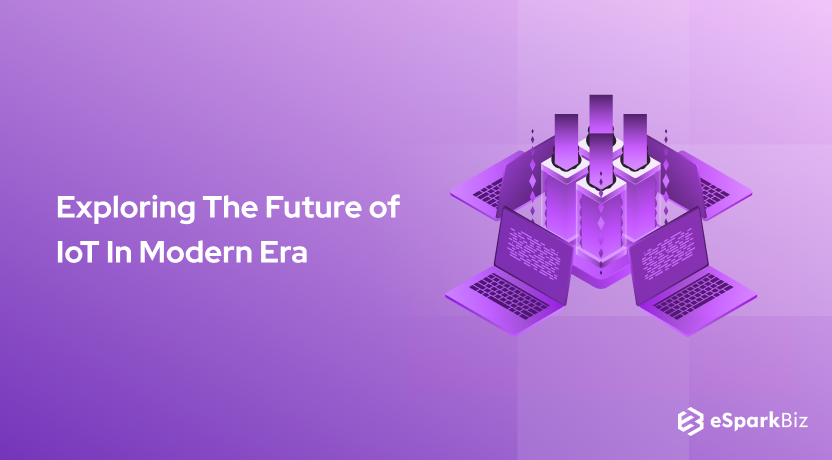The successful existence of the Internet has proved its potential to cater to the day-to-day needs. Moreover, its indispensability to the overall society has boosted the evolution known as the Internet of Things (IoT). Today, we will explore the Future of IoT in detail.
There has been a drastic revolution in IoT, and it will continue to happen even in the coming years. Even web development has been closely connected with IoT to build amazing web applications.
It is expected to have a greater impact of IoT on domains such as healthcare, agriculture, city, and office/home automation, energy and industrial management, and more. Today, we will explore all these things and more in detail.
Let’s Dive Into Future Of Internet of Things
Cybercriminals Using IoT
In 2016, the world witnessed the first Internet of things malware, wherein there was a strain of malicious software that was capable of infecting connected devices such as security cameras, DVRs, and more.
It was known as Mirai malware, and it accessed devices through their default usernames and passwords. Any Leading iot development company would be knowing about this trend.
The malware transformed the infected devices into a botnet to enable a Distributed Denial of Service (DDoS) attack. This attack aims at crushing websites with internet traffic. It ended up flooding one of the largest website hosting companies in the world.
As a result, various major websites and services came to a halt for hours. The code used by this malware is open-source, which means that anyone in the world can use it.
DDoS Attack Becoming More Dangerous
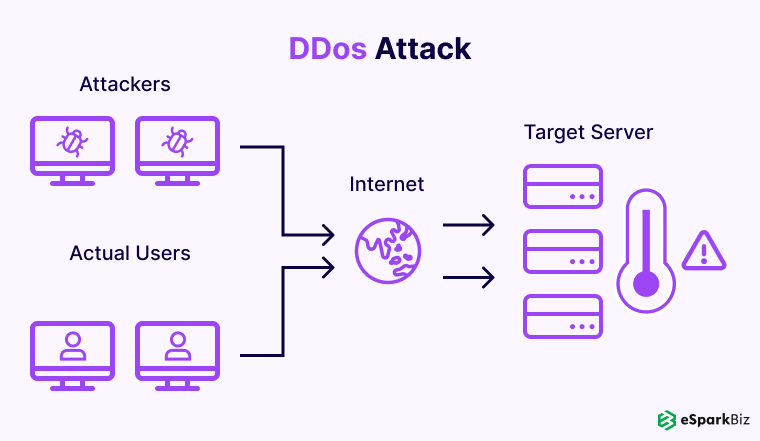
The Internet of Things has undoubtedly made people’s lives more convenient. However, a wide number of vulnerable IoT devices are exploited to establish Botnet by several attackers. It creates serious trouble for network security.
These attacks are popularly known as Botnet-powered Distributed Denial of Service attacks (DDoS). They have infected IoT devices to bring down websites.
However, with new advancements, organizations can certainly protect their networks by installing an in-line and real-time automated solution at the network edge. It will sense and terminate the threats from entering a network.
It is difficult to trace Botnet DDoS attacks, and therefore, the defensive approach is the best suitable.
More Smart Cities

Until now, we have witnessed only home appliances and other such devices that function with the Internet of things. But, have you heard about Smart Cities? Yes, you read that right.
In the coming years, entire cities will be designed to tackle traffic congestion, parking issues, or even make our lifestyle greener. This is the Future of IoT, without any doubts.!
As population increases, the urge for building better, intelligent, efficient, and sustainable environment arises. Therefore, there comes the Internet of things in the picture.
Smart cities will adopt IoT for things like building a smart economy and governance, enhancing safety, reducing energy use and cost, improving infrastructure, and decreasing environmental impact.
AI will be a Big Thing
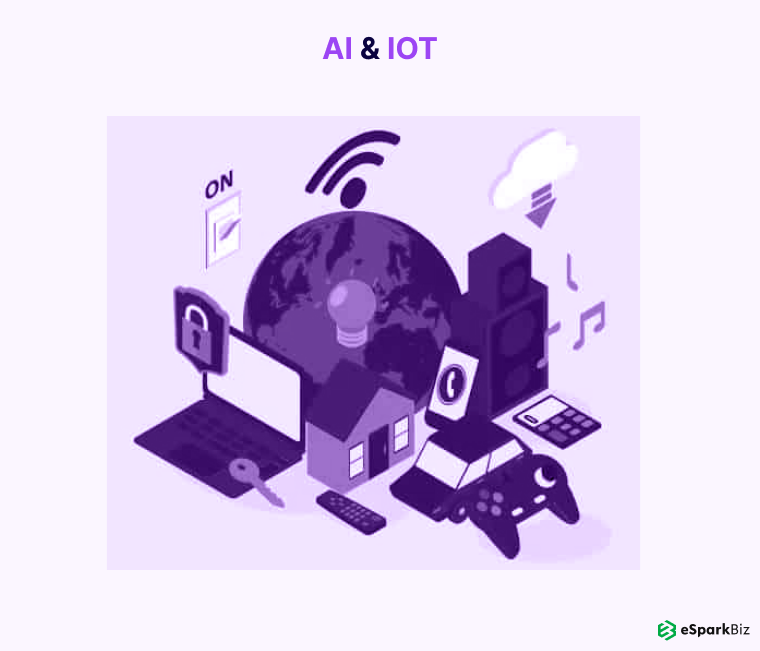
Thermostats, lighting systems, smart home hubs, and also coffee makers collect data on your habits and patterns of use. IoT Applications and Examples are real-time proof of that.
You can set up voice-controlled devices to record to allow them to record your voice in the form of instructions, and store them in the cloud. The collected data is used to aid what is known as machine learning.
Machine learning is considered as a kind of artificial intelligence that helps computers to learn without being programmed.
The programmed data in computers can help them learn your preferences and adjust themselves accordingly. This is the Internet of Things Future, without a doubt.!
Routers will Become Secure
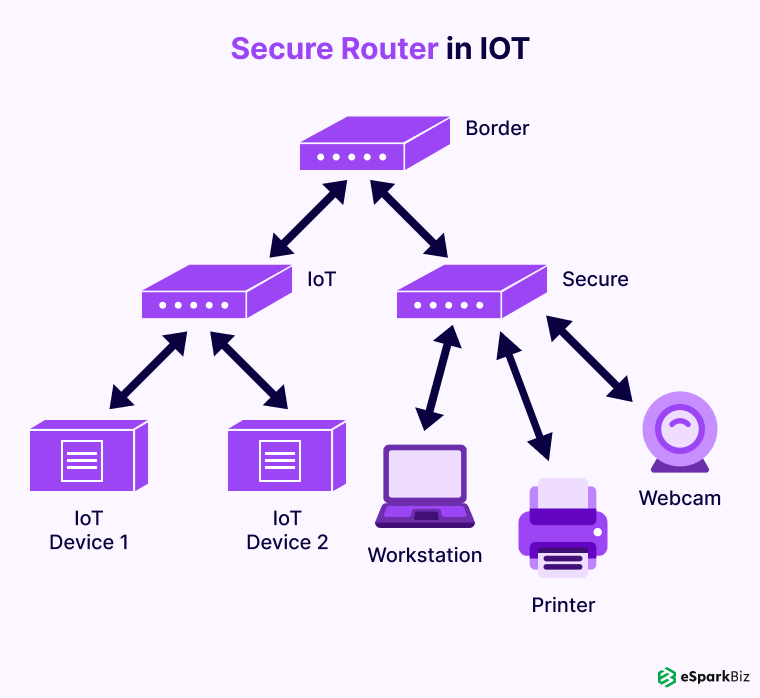
A majority of consumer devices that reside in the home do not have security software installed. Therefore, they are vulnerable to attacks easily.
It is because a lot of manufacturers overlook or give an afterthought to the security of their IoT devices, as they want to market them quickly.
As a result, the home router comes in the picture and plays a vital role in IoT Future. It is primarily the entry point of the internet in your home.
A conventional router offers certain security like password protection, firewalls, and the capability to configure them to allow only certain devices on your network. It means routers will continue to boost security.
5G Networks Fueling IoT Growth
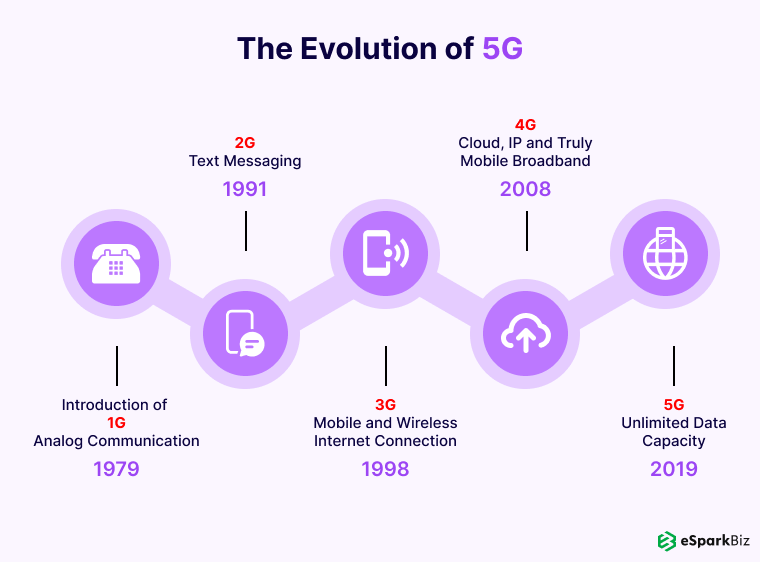
A majority of wireless carriers will continue to launch 5G networks. The fifth-generation cellular wireless is committed to providing greater speed and capability to connect with more smart devices at the same time.
When you have faster networks, your smart devices can gather, analyze, handle the data to a higher degree. The Future of IoT will have 5G playing a crucial role.
As a result, it will boost innovation at companies that make IoT devices and encourage consumer demand for new products. Thus, IoT devices will continue to fuel 5G networks and usher in new products in the coming years.
Emergence Of Smart Cars
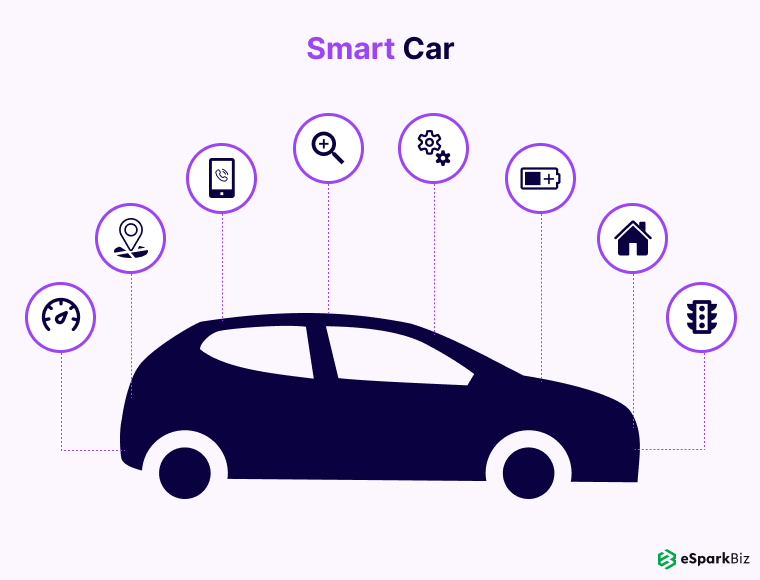
It has been forecasted that by 2020, 75% of all the cars around the world will be connected to the internet, and by 2025, 100% of the sold cars will be connected.
Moreover, it continues to forecast that by 2020, driverless cars will enter the market with mass production. So, IoT Future will have Smart Cars as a key player.
Google is testing autonomous driving, with new Tesla S, which is capable of automatic driving on the open roads as well as in traffic.
Moreover, heritage automotive companies such as Mercedes-Benz are not ready to give up on the race and have smart vehicles in the work.
However, in the coming years, new cars will progressively analyze your data and connect with other IoT devices that can include other high-tech vehicles on four wheels.
New Privacy & Security Concerns
In the IT industry, it said that a Hack-proof system is just a myth. In such a case, the security of IoT also becomes a critical issue.
While IoT is heading towards its peak, bigger advancements in digital security have also started taking place. Artificial Intelligence is inevitably a bigger player in this field. Various IoT Security Concerns will take place and you need to take care of them.
Moreover, new self-defence mechanisms will examine IoT as well. Not to forget that shifting from old to the newer ones is only a matter of advanced and updated systems. IoT will inevitably become robust due to these connected devices.
As mentioned earlier, 5G IoT devices will directly connect to the 5G network instead of going through the channel of a Wi-Fi router connection. So, you need to explore the Future of Internet of Things.
Legislation & Regulatory Activity
The increased existence and usage of IoT devices has raised the issues of security and privacy. The European Union implemented the General Data Protection Regulation in the mid-2018.
As a result, several other security and privacy initiatives took place in various nations around the world. IoT Future needs to be looked at from the perspective of GDPR.
With GDPR, the European Government has set an ideal illustration by placing an emphasis on citizens’ privacy and data. IoT devices will continue to make their way in the business world.
Therefore, organizations will require to have a defined IoT structure deployed to ensure the security of data and operations. Recently, in the United States, California passed a harder privacy law.
The Rise Of Edge Computing
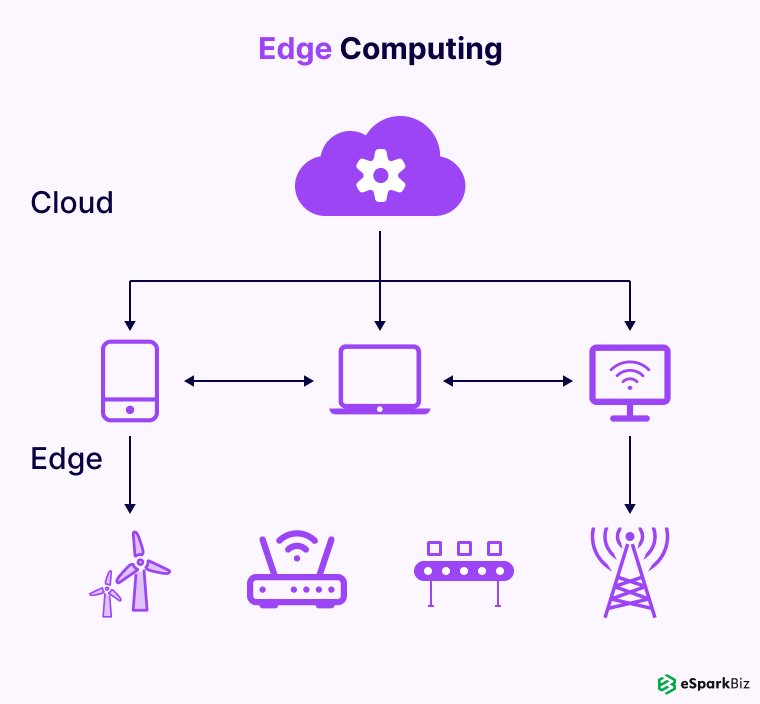
Edge computing has changed the process and delivery of data off lately. The thriving growth of IoT devices and real-time calculations require a huge amount of computing power. Thus, it drives this technology forward.
Edge computing involves bringing data and computations closer to the device. With this technology, you do not need to depend on a faraway central location. So, Future of Internet of Things will definitely have Edge Computing as a key player.
As a result, the potential issues do not affect the data and performance of an app, especially for the real-time data.
One of the primary goals of edge computing was to decrease the bandwidth cost of IoT data that travels a long distance. The rising number of IoT devices that send and receive huge amounts of data has given rise to the demand for creating this technology.
AR (Augmented Reality) & VR (Virtual Reality)

The relation between Augmented Reality and IoT has been growing deeper for a while now. IoT aims at filling the gap between the physical objects and infrastructure.
While AR is dedicated to bringing digital elements to real life. The combination of both these technologies has proved a great one.
For example, with the use of AR, it is possible to identify what data to display to the employees working with a specific piece of equipment.
Additionally, you can deploy IoT sensors to measure and transmit that data. Such a blend of technologies can be implemented to handle the maintenance of distantly placed equipment or in places with hazardous conditions.
Moreover, AR and IoT are capable of showing their potential in the field of healthcare as well. For example, surgeons can use an app designed to restructure a body part in 3D.
Additionally, they can also use devices to measure significant stats in a real-time mode, which involves IoT technology. As a result, these technologies make complex procedures smooth for specialists and safer for patients.
Demand For Global Connectivity
The demand for connected devices is ever-growing around the globe. It means that they are expected to work across a wide range of nations to achieve their goals.
In this relevance, a Swedish company called Brighter came up with the concept of a connected insulin dispenser, which would take blood samples to measure glucose and make injections.
The primary issue in making this device was to make it function with a wide range of networks in various nations.
However, they have survived their troubles, and recently, they have launched the product on the market of the United Arab Emirates.
Global connectivity is inevitably needed to empower IoT to be a significant part of our daily routines. These may include finding a parking spot or starting a car’s engine remotely.
Digital Twin Technology

IoT cannot have a bright future if its security is on a scanner. For example, if organizations adopt IoT devices without considering necessary security measures, they are more likely to fall for cyberattacks. Similarly, if there is no protection of data, then there is no meaning of using such devices.
Digital Twin technology is a copy of a physical device, which acts as a bridge between the physical and virtual worlds. Future of Internet of Things will have Digital Twin as a vital cog.
It involves transmitting the data simultaneously that allows both physical and virtual worlds to exist parallelly. This technology gives an assurance of security to IoT devices without any physical interaction with them.
Moreover, Digital Twin technology offers the auto-update feature that updates IoT devices remotely through the digital space.
Future of Industrial IoT (IIoT)

The year 2024 has already arrived, and it has started witnessing the transition from consumer to industry, which is also known as IIoT. React with IoT creates amazing IIoT projects.
Let us take a quick look at these industries that will take the maximum benefit in the Future of Internet of Things.
HEALTHCARE: Effective Detection & treatment Of Disease
As we mentioned earlier in an example, Internet of Things Future Applications can be best suitable for the healthcare industry through its innovations. With IoT devices, it is possible to reduce healthcare expenses and enhance patient care.
These devices can help in detecting diseases and also make treatment more effective. They include devices for remote monitoring, wearable devices, and asset monitoring.
AGRICULTURE: Reducing Cost With Smart Farming
With the increasing population, the demand for IoT devices will also rise. They will effectively help in reducing costs, saving time, and also feeding citizens.
In the agricultural field, equipment, and machinery used for cattle monitoring, smart farming, and smart greenhouses. So, the Future of IoT will be brighter and shiner.
RETAIL: Improving Data Analysis To Enhance Customer Experience
Along with other industries, Internet of Things Evolution in the retail industry expected to grow immensely. The innovations of IoT in this field include improved data analysis, voice recognition, the boom of applications and the next-gen devices.
HOUSEHOLD TECHNOLOGIES
Just imagine if your electric appliances could turn off by themselves. Yes, you read that right. IoT has made it possible to have smart home automation.
Today, IoT has been nurturing rapidly with modern connected devices, monitored by users remotely using commands. Open Source IoT Frameworks can be helpful in this work.
Examples of such devices can include smart toothbrushes, smart locks, smart kitchens with sensors that remind people to turn off electronics, and smart thermostats for remote temperature control. As a result, IoT devices will prove to be more functional and safer as well.
IoT in 2025
It is forecasted that the number of IoT devices will reach 21.5 billion by 2025. Even today, you can find various home appliances, vehicles, portable devices, and other gadgets connected to the internet. These devices can smoothly exchange data among themselves.
However, IoT devices function in a complete environment of technology advancements. It means that technologies will continue to fuel advancements in these connected devices.
The union of technologies like 5G networks, robotics, artificial intelligence, and edge computing will bring in new benefits in the Future of IoT devices.
How Smart IoT works in Real Life?
IoT has brought an immense impact on people’s lives by drastically changing their lifestyle via smart and connected devices. Future Internet of Things will be smart and innovative. Let us take a look at one life-changing example.
In 2017, in Los Angeles, the city’s fire department asked T-Mobile to help them keep small fires in homeless campsites from transforming into big ones.
As a result, the company went for a partnership with the city on a pilot project, wherein they used thermal imaging cameras and cloud-based intelligence. They effectively monitored the neighbor hoods around the city.
T-Mobile’s LTE network connects these pole-mounted cameras. Nokia’s AI platform interprets the data to determine the possibility of a fire or something that can cause the temperature spike.
If a there’s a fire, Nokia’s AI sends notifications of the same to a dashboard. It will help the fire department to know where to deploy fire trucks.
The thermal imaging cameras can see the fire two minutes before anyone can see it, which will help first responders to have that extra time to contain the blaze before things go out of hand.
With sufficient on-board memory and computation, effective analysis and decision-making could happen on the device itself. Besides, making it smart, expenses are likely to increase.
Therefore, a blend of a low-cost sensor, high-speed network, intelligence, and cloud can surely empower the city to deploy this technology with lower cost. It will transform an average city into a smart city.
Conclusion
In the coming years, we will surely witness more amazing advanced applications that will emerge across various industry verticals. The future of the Internet of Things will have these apps playing a vital role.
IoT is the future of advanced applications with lot of innovations continuous happening, so to add value to your project needs with the IoT functionalities, do rent a coder which will ultimately ease on your efforts and would provide you with high quality results.
The implementation of the cloud has been a lot significant over the years. The growth of the IoT market has played a role in it. Therefore, it is safe to say that the future of IoT will belong to the Smart IoT with Cloud technology.


-
What Is The Future Of IoT?
With more and more connected devices being visible in the modern era, IoT will have a key role to play for transferring the data among them.
-
Is The Future Of IoT Bright?
The simple answer to this question would be YES. Despite all the security and privacy concerns, IoT will remain a force in the future.
-
What Is The Biggest Threat To IoT?
Security vulnerabilities are the biggest threat to IoT as there is a constant transfer of data among the devices over the internet.
-
Which Are Best IoT Platforms To Work In Future?
The best IoT platforms to work in the future are as follows:
- IBM Watson
- Amazon AWS
- Oracle IoT
- Cisco IoT
- ThingWorx
-
What Will Come After The Internet of Things?
As per the industry experts, the Internet of Ears is on the cards after the Internet of Things.
-
How The Future Of IoT Will Impact The Society?
The future of IoT will allow the society of having smart solutions that can save time as well as money.






